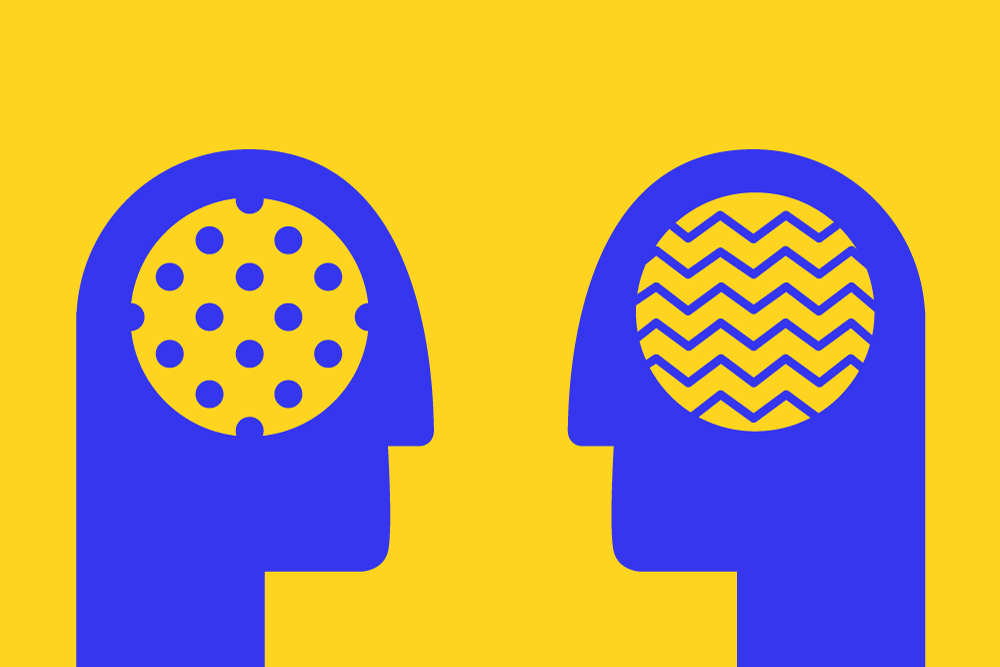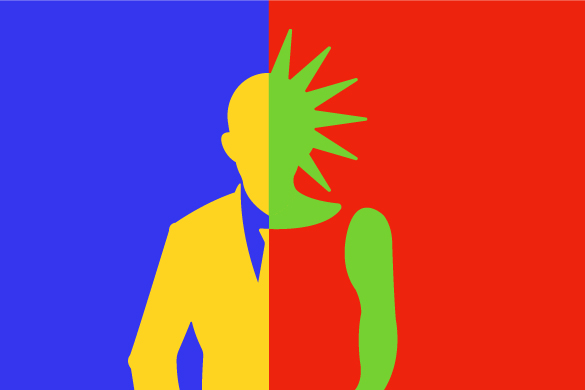Let it in your head: how a metaphor can help to study the consumer
Brand strategy, platform and communications are not empty words, but effective sales tools for managers who are ready to study their customers. It is the ability to understand the customer and their expectations of a product is the foundation of any successful business.
Therefore, more and more often companies are being asked to find the hidden motives of consumers and their most honest attitude towards the product. In response to this, the marketing research industry is annually updated with new techniques for studying target groups. One such technique is in-depth interviews combined with the technique of metaphor.
In this article, we will explain how metaphors work, how they help to look at a product through the eyes of the consumer, and how to collect them using in-depth interview methodology.
We have discussed how this works with specific examples here.
What is it for?
Contrary to the outdated and simplified concept of «the rational human», no one is able to fully understand all the motives of their actions or the reasons for their attitude towards anything. Any rapid interviewing tool is unable to identify a person’s real relation to the subject matter and here’s why:
- The respondent has never reflexed on this topic, so he does not know how to answer the question and uses the most common and simple answers.
- The respondent experiences internal conflict or fear of social disapproval, wants to seem better than he/she really is. Therefore, he/she unconsciously distorts information about himself/herself in favor of generally accepted norms and standards of social behavior.
The situation is slightly better with focus groups, in which the moderator provokes discussion on a given topic among a small circle of people. Long-term discussion can lead to interesting insights, but the overall results of the study will not be representative, because the discussion process is always influenced by group dynamics: each participant of the conversation influences the other, that’s why the overall representativeness of opinions is greatly distorted (for example, if a group has a strong leader and several followers).
In-depth interview combined with metaphor technique
The best way to deal with the problem of unreliability of the received information is the method of in-depth interviews: the moderator communicates with the respondent alone for 1.5 hours and tries to get to the profound meaning with the help of specially prepared questions. An in-depth interview is a way of collecting data in qualitative research style, an informal conversation that helps the respondent open up, allows him/her to focus on feelings.
One way to find deeper meanings is a metaphor technique that bypasses the rationalisation of the respondent and allows you to look at the world the way he/she sees it. Metaphor in the hands of the researcher can become the most powerful tool for obtaining deep information. Understanding this mechanism requires understanding how people perceive reality.
The brain is designed in such a way that it forms mental images about the objects of the surrounding world. These images consist of separate characteristics, for example: the sun — round, orange, glows, gives heat, hangs on the sky — all these characteristics of the «sun» image that is shaped and stored by our brain.

Images of individual objects can establish associative contextual relationships with each other, forming complex and integral image maps — a «sunlit green meadow and cloudless sky». If you put the person in the midst of this image and ask him to describe the inner sensations, the image will be supplemented by emotional characteristics — «happiness», «joy», «serenity» — it will be the continuation of the associative semantic chain formed from the image of the «sun».

Cultural code
Formed images of objects can vary greatly from person to person and from culture to culture, but within the same community there are some common images (cultural codes). This is how marketers are able to create brands that are identically perceived by consumers from the same environment.
Mentality differences affect the perception of the same things, and you cannot ignore it during brand development or advertising communications. For example, the introduction of bio acquiring in various communities. On the one hand, developed liberal societies see the introduction of bio acquiring as a time-saving opportunity and freedom from plastic cards. On the other hand, the benefits of saving time are inferior to the value of total transparency to the state in conservative traditionalist communities — it is more effective in providing security and social justice.

Another example of the difference in cultural codes is the perception of the image of the farmer: there are «free independent landowners» in the USA, there are «simple laborers who can only dig the ground» in Russia. Therefore, understanding the cultural codes of society and mental images of the target audience is essential in creating a strong brand.
One object can be examined through the image of another because of the semantic connections between mental images. The metaphor in this case is a bridge between the images of reality. The respondent fills the empty space with his own meaning, transfers to it all the significant characteristics of the object under study. In this way we can understand the true attitude of the respondent to a certain topic, bypassing rationalisation, denial, fear of social disapproval and other barriers that prevent the respondent from realizing hidden unconscious motives.
How to work with a metaphor
The metaphor consists of the role of the object (what it does, what function it performs, how it interacts with other objects) and the context (what surrounds the object and how it is affected). Depending on the tasks, it is possible to put more emphasis on the role of the subject or on the respondent’s feelings in a certain context.
Let’s consider the various methods and divide them into those that resemble consumer brands (character metaphor, analogy) and those that are effective for corporate brands (country metaphor, abstraction, analogy).
1. Direct analogy
The easiest way for a moderator, but not the most effective way to learn the profound meanings — asks directly: «This product is like… what?» or «What is…?» these kind of questions puzzle the respondent. Consequently, he/she gives the first available answer out of despair, which is not always deep and valuable for the research, but generally reflects the most common of values in society. This method is inefficient, it is better to use more specific questions.
Let’s consider the concept of «digital transformation» as a product. An example of the question might be: «What is «digital transformation»?».
Let’s compare several real answers:
- Process automation.
- Marketing hype.
- Replacing man with technology.
- Transition from form to content.
- Algorithms of information processing.
- Changing the world for the better.
- Improve efficiency and forecasting capabilities.
As we can see, digital transformation has different meanings for different people. Thus, appropriate communication campaigns and product brands need to be developed in line with the different segments of the audience.
2. Character metaphor
It is most common when a moderator asks to personalize a product/service/brand/company by expressing the object of research as some kind of hero. It can be anything — real or fictional, it can be expressed through an abstract role model (family — mom, professional — chef) or be a specific person (historical — pope, fictional — wicked witch). Character descriptions also include physiological, demographic, social, and personal characteristics.
The method is convenient, because you can immediately understand the role relationships between the user and the object under study, the logic and tools of these relationships, the hierarchical structure, interpersonal rules of interaction, expectations and drivers/ barriers — all this information is extremely useful in case of creating an image of a brand or communicate through it. The method is suitable for studying specific objects (product(s) and images communicating with the consumer (brand(s).
Let’s consider the concept of «digital transformation» as a product again. Example of the question: Imagine the digital transformation. What character do you associate it with? Who could it be? Describe its characteristics».
The following characters or images can be generated:
- Superhero, superhuman — the image symbolizes the rapprochement of man and technology, the preservation of control and responsibility in humans; focus on personality.
- Mechanism — absence of a person in a typical production chain, shift of responsibility to the technique; focus is on the system.
- Scheme, graph, algorithm — the simplest technological image, there is no role of the person and interaction «machine — human»; focused solely on the system.
- «Rounded Substance with Neural Bonds Within» (Artificial Intelligence). — an alternative to the brain that makes complex and important decisions and after a while may replace the human; focus on personality.

The perception of digital transformation greatly varies due to the life experience of the respondents with fully formed attitudes and values. It is easy to understand the expectations and needs of different groups of consumers and identify ideas for advertising campaigns from these images.
3. Metaphor of the country
It is better to use the metaphor of the country if the researcher studies abstract objects or is interested in spatial sensations and atmosphere. To do this, the moderator asks to describe the subject of the study as a country and indicate simple characteristics: location, climate, buildings, population and the feelings of the respondent from being in this country. Unlike the character metaphor, it is more difficult to understand the role interaction between the respondent and the object of research, because the subject’s personification becomes less pronounced. The method is suitable for abstract concepts (including those related to the company, the processes of providing services) of space and, if necessary, a more in-depth study of the respondent’s feelings during interaction with the object of the study.
This time we will consider a company that provides services in the field of information technology as an object. Let’s suppose that the respondents are real customers of the company. An example of an interviewer’s remarks: “Describe the company as a country or city.”
Let’s compare some real answers recently received in one of our research projects:
- A metropolis is a big city with modern architecture and Smart City technologies, the residents are actively on the go, business-like and constantly busy with life.
- A large industrial city in the Urals is a well-thought-out city with clear management, responsible, strong, honest and rational residents.
- Manchester — the old quarters of factories which have today been converted into modern business lofts, there are a lot of people in a hurry, and everyone is busy with something.
- A small sunny town — single story houses in a classical southern architecture, quiet and narrow streets, kind positive people, slowness and calmness prevails in the city.
- A southern country like Portugal — small towns along the sunny coast, many cheerful, friendly, open-minded people, a country without strict rules.

As we can see, there are two main images in the perceptions of customers about the company. The first is a small southern town with a calm measured rhythm of life, open friendly residents and simple classical architecture. The second is a large business metropolis with a frantic pace, ultra-modern high-tech architecture, modern technologies, responsible and business oriented residents.
Moving from the language of metaphor to a more understandable one, we can say that some of the company’s clients perceive it in the role or as a model of “serious specialist”, and some — in the role of “one of the guys”. These two images contradict each other, which means that the lack of a single image for a company can be extremely harmful to the brand.
4. Metaphor of abstract sensory experience
A sophisticated method of deep immersion in the consumer’s feelings about relation to the object of study is a direct description through all sensory channels: sight, hearing, taste, smell, touch. The method is more suitable for product categories with the aim of understanding the general perception of the product.
As an example, let's look at our research for the country real estate market, in which we asked respondents to describe the characteristics of an ideal country house - its color and shape, temperature and humidity, textures, smells and sounds.
Let’s compare some real answers we received in the process of one of the studies:
- Orange, rectangular, steady and slow. Elastic, warm, rough, hard. It smells of wood, forest, pine needles. Sounds like murmuring water and singing birds.
- Natural wood color, square, resistant. Elastic, hard and warm, rough, dry. It smells of wood, cedar, barbecue and campfire. It sounds quiet and calm, jazz or rock and roll.
- Subdued natural colors, cube, stable. Elastic, hard and warm, rough, dry. It smells of forest, pine needles and cones, the aroma is not strong, without a scent plume. It sounds like the soft singing of birds in the distance.
- Natural soothing colors, rectangle, stable. Elastic, firm, warm, dry, smooth. It smells of forest, pine needles and cones, the smells are strong and saturated. It sounds like birdsong, insects, trees quietly and rhythmically brushing in the wind.
The result point to some stereotypes, but what seems stereotypical to you is what your consumer expects from you. In our example, the general requirements for the design of a country house are immediately clear — stable, with warm, calm colors and simple solid shapes, avoiding cold and humidity, lack of hardness, abstract forms.
Metaphor is a useful tool for studying the consumer, his/her real needs and motives, attitudes towards the product and its perception. Metaphor removes all mental intangible barriers. It is a multifaceted tool in the hands of the researcher, but researchers must be able to use different types of questions and dissect the answers accurately in order to use them correctly.
Not every study allows for the use of metaphors. It should not be interpreted literally — each metaphorcan contain a whole galaxy of meanings that must be carefully parsed and analyzed. We are ready to talk endlessly about this Metaphorical method, subscribe to our newsletter so you don’t miss out on future articles.
We at Opencore love this tool for its accuracy and depth. If you also appreciate its advantages, subscribe to our newsletter - we promise to provide even more useful information in new articles.
Subscribe to the newsletter



